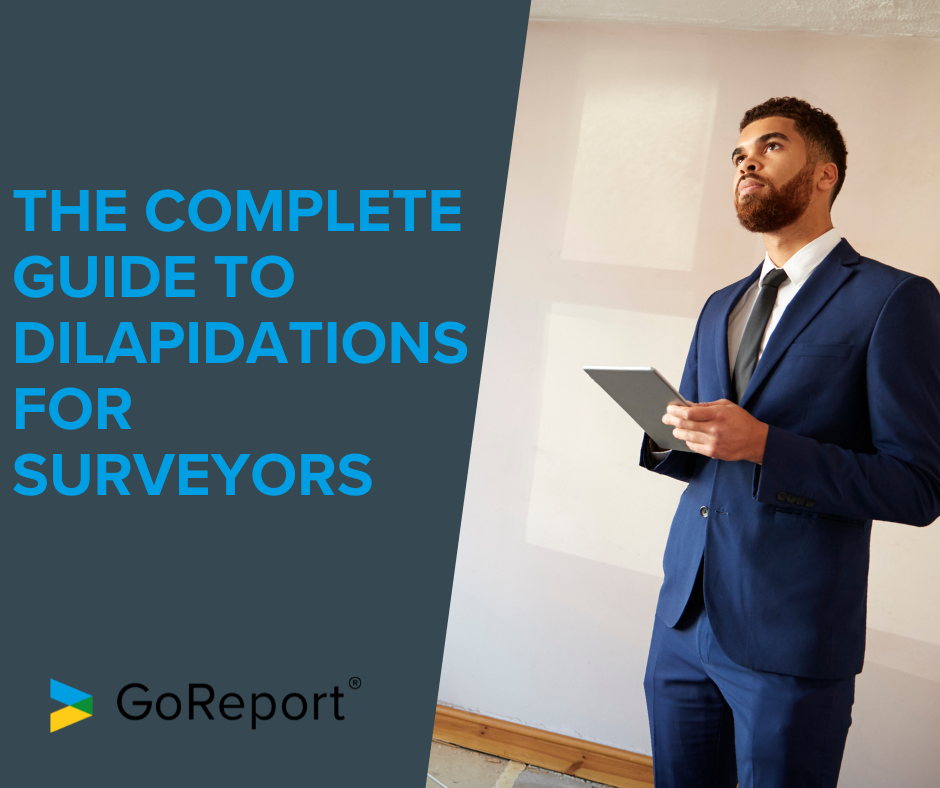Water Ingress: Meaning, Reporting, and Common Signs

Water has a habit of finding the tiniest crack and making itself at home. For surveyors, especially those in the UK and Ireland where damp weather is more of a lifestyle than a season, water ingress is a repeat offender that brings with it costly repairs, structural issues, and plenty of paperwork.
Whether you’re inspecting a 1930s semi or overseeing a multi-storey office refurbishment, chances are you’ve encountered signs of water ingress – but what exactly does “ingress of water” mean? How should it be reported? And why does it keep cropping up despite every effort to keep it out?
If you’ve found yourself wondering how to spot water ingress early, what causes to check first, or how to write reports that actually help clients fix problems, you’re in the right place. This article gets into the details, all of which are clear, practical, and geared toward how surveyors actually work. Whether you’re in residential or commercial surveying, there’s something in here for you.
Contents:
- What is water ingress?
- Why should surveyors care about water ingress?
- How serious is water ingress?
- Surveying tips for spotting water ingress on-site
- How to accurately report water ingress: Surveyor’s checklist
- Common pitfalls when surveying for water ingress
- What about tricky cases when the ingress source isn’t obvious?
- A word on communicating with clients
- Tools that make identifying water ingress easier
- Digital tools for water ingress reporting
- FAQs about water ingress
What is water ingress?
Water ingress is the unwanted entry of water into a building structure, whether through walls, roofs, floors, or openings like windows and doors. In other words: If water’s getting in where it shouldn’t, that’s ingress. Sometimes you’ll hear the term “water ingression” in its place, though it’s less commonly used in the UK. In most reports, “ingress of water” or “water ingress” are the preferred terms.
It’s not just a cosmetic problem either. Water ingress can quietly cause havoc behind walls, under floorboards, or within cavity walls. often going unnoticed until the damage is already done.
For surveyors, understanding the signs of water ingress is essential: it helps you identify the cause, assess the risk, and advise on next steps.
Why should surveyors care about water ingress?
Because water doesn’t just sit there. It can rot timber, corrode steel, degrade insulation, and cause mould. Detect it early, and you prevent costly repairs down the line. Miss it, or misdiagnose it, and you risk your client’s property value, health safety, and your professional reputation.
How serious is water ingress?
It depends how long it’s been happening, and how quickly it’s acted upon. Left untreated, water ingress can lead to:
- Structural timber decay (especially in suspended floors and roof voids)
- Corrosion of embedded steel or fixings
- Reduced insulation performance and increased energy bills
- Health issues for occupants from mould and damp
- Devaluation of property and increased insurance premiums
It’s rarely just a case of drying things out and calling it a day. When litigation or insurance claims get involved, the quality of your report can become a deciding factor.
Surveying tips for spotting water ingress on-site
Here’s where theory meets boots on the ground. Below are some tips to help you catch water ingress issues before they become a headache.
- Start with a thorough visual check, don’t just glance around
Look closely at external walls, roof junctions, gutters, and window seals.
Check for:
- Cracks or gaps in pointing and render
- Peeling or bubbling paint
- Stains and discolouration
- Efflorescence (white chalky deposits)
- Mould patches or musty smells
Sometimes, water ingress shows in subtle ways, including warped skirting boards, soft plaster, or even a faint damp smell.
- Use moisture meters strategically
Don’t just rely on visible signs; use your moisture meter on suspect areas.
- Check both internal and external walls
- Measure timber joists or floorboards near damp areas
- Compare readings across multiple spots to spot anomalies
Be mindful: some materials retain moisture longer than others, so interpret readings in context.
- Don’t ignore the roof and guttering
Water ingress often starts at the top. Inspect flat and pitched roofs carefully, especially around joints and flashings.
- Look for pooling water or damaged membranes
- Check gutters and downpipes for blockages or leaks
If water can’t drain properly, it will find its way into the building fabric.
- Probe suspicious areas with a borescope if possible
For cavity walls, roof voids, or under floors where direct inspection isn’t practical, a borescope can save you from unnecessary damage and give you a peek inside.
- Consider the building’s history and weather patterns
Has the property had recent storms? Any past leaks or repairs? Weather conditions can exacerbate hidden issues. Wet winters in the UK make ingress problems worse.
How to accurately report water ingress
Think of your report as a roadmap, showing exactly what’s failing and what should be tackled next. Follow these steps to make your water ingress reports clear, actionable, and credible:
- Identify precise locations – Use floor plans, room names, or coordinates (e.g., “north elevation, first-floor bedroom, behind radiator”)
- Describe signs clearly – Colour, size, texture, smell, and progression of stains or damage
- Include moisture readings and photos – Always support your findings with data and visuals
- State probable causes – Back up your conclusions with reasoning (“Blocked gutter causing overflow and penetration”)
- Recommend investigation or remedial actions – Whether it’s specialist damp-proofing surveys or immediate repairs
- Advise on monitoring – If unsure about severity, suggest follow-up inspections or moisture monitoring over time
Clear, detailed reporting ensures your clients understand the issue fully and what’s needed next.
Common pitfalls when surveying for water ingress
It’s tempting to write off small damp spots or to assume mould is just condensation, but these shortcuts can backfire.
Avoid these traps:
- Ignoring seasonal variations – Damp spots might only appear after heavy rain or winter months
- Confusing condensation with ingress – Condensation is caused by internal humidity, ingress is external water entry
- Relying on guesswork alone – Always verify with tools or additional inspections
- Not communicating clearly to clients – Technical jargon can confuse; translate your findings into layman’s terms
Knowing these pitfalls helps you keep your inspections precise and your reports trustworthy.
What about tricky cases when the ingress source isn’t obvious?
Sometimes you can see the damage but not pinpoint the source. In these cases:
- Recommend more invasive investigation if possible (e.g., lifting floorboards or partial removal of cladding)
- Use thermal imaging to detect hidden moisture pathways
- Suggest moisture logging over weeks to detect fluctuating damp levels
These techniques help you move from uncertainty to confident diagnosis, which your clients will appreciate.
Communicating with clients
It’s easy to forget that to most clients, “water ingress” just sounds like a fancy way of saying “leak.” What they really want to know is:
- Is this dangerous?
- Will it get worse?
- How much will it cost to fix?
- Can you help stop it happening again?
Clear communication in plain English goes a long way here. Yes, you’ll include technical detail in your report but during walk-throughs or calls, don’t be afraid to simplify. It builds trust and helps them make quicker decisions.
Tools that make identifying water ingress easier
While experience goes a long way, having the right tools in your kit speeds up diagnosis and improves reporting.
Here are some commonly used tools:
- Moisture meters – Essential for understanding the extent of dampness in walls, floors, and timber.
- Infrared thermal cameras – Useful for spotting thermal bridges, trapped moisture, and leaks behind finishes.
- Borescopes – To check inside cavities or floor voids without invasive opening-up.
- Hygrometers and data loggers – For long-term monitoring of humidity levels in problem areas.
- Water tracing dyes or smoke pens – Great for tricky flat roof investigations or air leakage tests.
Using these tools doesn’t just help you find the problem faster, it backs up your report with evidence clients (and contractors) can act on.
Digital tools for water ingress reporting
Surveying water ingress means juggling photos, notes, measurements, and sketches. Digital solutions like GoReport can help simplify this chaos:
- Capture all evidence on-site via mobile
- Attach photos and moisture readings directly to reports
- Use voice notes for quick observations
- Generate professional, consistent reports instantly
- Reduce errors and speed up turnaround times
Using digital tools means less time wrestling with paperwork and more time focusing on what you do best: spotting and reporting issues clearly.
FAQs about water ingress
How do I tell rising damp from water ingress?
Rising damp moves up through the masonry from ground level, usually up to 1m high, often showing a tide mark. Water ingress can be anywhere above ground level, from rain or leaks.
Is water ingress always visible?
Not always. Hidden ingress can cause damage behind walls or under floors without obvious surface signs.
What’s the difference between “water ingress” and “water penetration”?
They’re often used interchangeably, but ingress tends to refer to unwanted entry of water, while penetration can imply water passing through a specific barrier or material.
Can I rely solely on visual inspection?
No. Combine visual inspection with moisture meters, thermal imaging, or bore scopes for best results.
How soon should I report suspected ingress?
As soon as possible. Early reporting allows clients to address problems before structural damage or health issues worsen.
What is the difference between water ingress and egress?
Water ingress is when water enters a building or structure, often due to leaks, cracks, or poor sealing. It can lead to damp, mould, and long-term damage.
Water egress refers to how water exits or drains away from a building, typically through gutters, drains, or designed systems.
In short, ingress is water coming in unintentionally, while egress is water being removed or drained as intended.
Your time’s valuable, and your reports need to be spot-on. With GoReport’s digital surveying software, you can streamline the entire process, generating reports clients understand, and speeding up your workflow. Start a free demo of GoReport today and see how reporting can be less of a headache.







